This page provides an overview of the most common spiders in Oklahoma. According to the Oklahoma State University, close to 450 spider species are described in the state. Many more are probably still to be discovered. The most common groups of spiders in Oklahoma are orb weavers who spin large webs in forests or our gardens, jumping spiders with the ability to jump, scary-looking but harmless wolf spiders and very few that can actually cause any harm to people.
This page should help you identify spiders common to Oklahoma with plenty of pictures. To rule out that you are dealing with a potentially harmful spider, let’s first have a look at Oklahoma’s venomous spiders.
Poisonous Spiders in Oklahoma
Generally speaking, almost all spiders are venomous (not poisonous). However, only very few species actually have the ability to cause any significant harm to people. Casualties from spider bites in the United States are extremely rare. In fact, around ten times as many people die from bee or wasp stings than from spider bites. In Oklahoma, there are two genera of medically significant spiders: Black widow spiders and the infamous brown recluse.
Black widows in Oklahoma
There are three different species of black widows in the United States. All three of them can be found in different areas of Oklahoma. The northern black widow (Latrodectus variolus) is found in the eastern parts of the state east of Oklahoma City and around the Tulsa area. The western black widow (Latrodectus hesperus) is only found in the Oklahoma panhandle west of Beaver. The southern black widow (Latrodectus mactans) is found throughout Southern Oklahoma.
Appearance: Black widows are predominantly black spiders with a red hourglass shape on the underside of their abdomen. Their abdomen is round and shiny and their legs are long and slender. You can see images in the overview below. Black widows are often confused with the false black widow spider (Steatoda grossa).
Symptoms of a bite: A bite of a black widow can cause immediate flu-like symptoms as well as localized pain. Symptoms can include fever, nausea, dizziness and local swelling. If you suspect that you have been bitten by a black widow, seek medical attention.
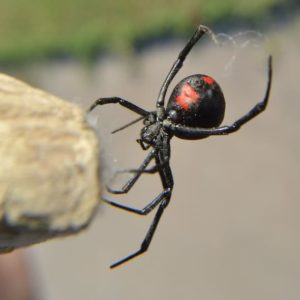
Latrodectus Mactans – Southern Black Widow
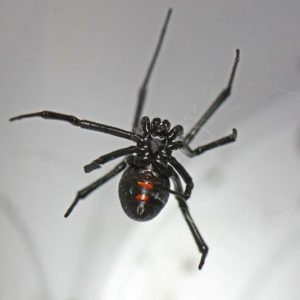
Latrodectus Variolus – Northern Black Widow
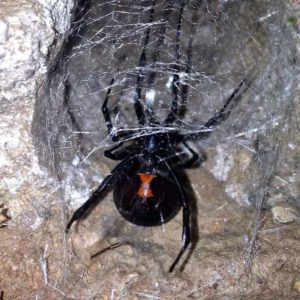
Latrodectus Hersperus – Western Black Widow
Brown recluse spiders in Oklahoma
Brown recluse spiders occur throughout Oklahoma. Sightings west of Guymon in the panhandle are extremely rare, however. As the name suggests, brown recluse spiders are predominantly brown spiders. They can be identified by a darker brown violin-shape on their back and the fact that they have six eyes (most other spiders have eight eyes). Brown recluses are not large spiders and their bodies grow to a maximum of 3/4 in (20 mm). Their legs are long and slender.
The majority of alleged brown recluse sightings are actually other brown spiders in Oklahoma that are misidentified, like wolf spiders, nursery web spiders or others.
Symptoms of a bite: A bite of a brown recluse can cause severe skin damage. Symptoms usually show only a few days after a bite and can include redness or infections around the bite wound that can get worse over time. If you have been bitten by a brown recluse, seek medical attention immediately. If you have spider bite wound that gets infected or develops are red area around it, you should consult a medical professional as well.
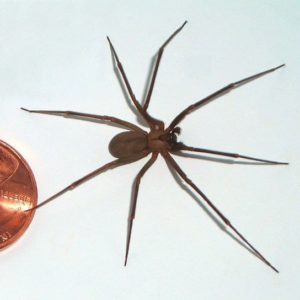
Loxosceles reclusa – Brown Recluse
What about hobo spiders or other venomous spiders in Oklahoma?
In the late 20th century, myths about the deadly and aggressive hobo spider made their rounds through newspapers and emails. The fact that hobo spiders (Eratigena agrestis) are potentially dangerous or especially aggressive has been rejected by scientists as there isn’t one single proven case of a hobo spider bite that caused any serious effects on a human. Furthermore, hobo spiders are exclusively found in the Pacific Northwest and do not occur in Oklahoma.
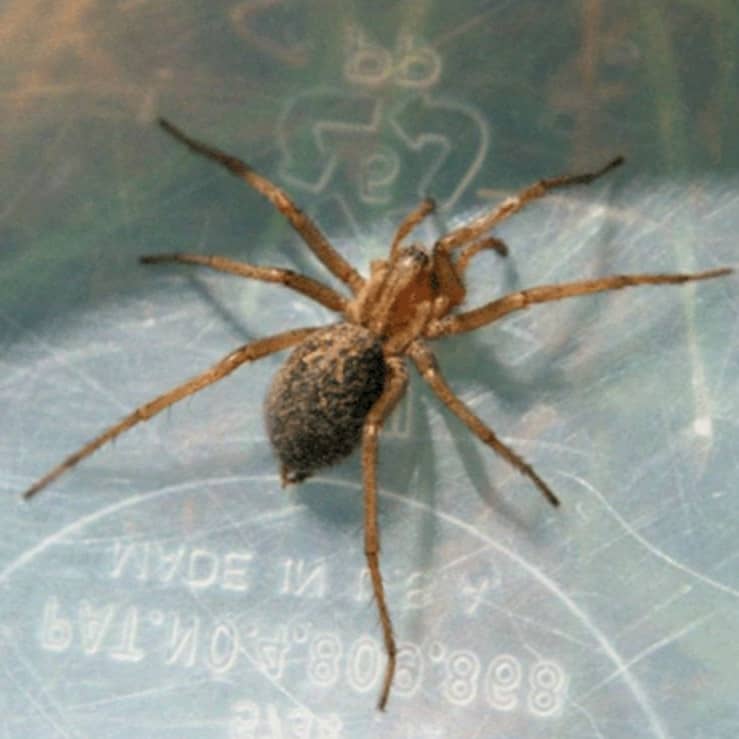
Other spiders that bite in Oklahoma and that can cause effects such as headaches and severe pain are yellow sac spiders (Cheiracanthium sp.). However, these spiders are not considered medically significant.
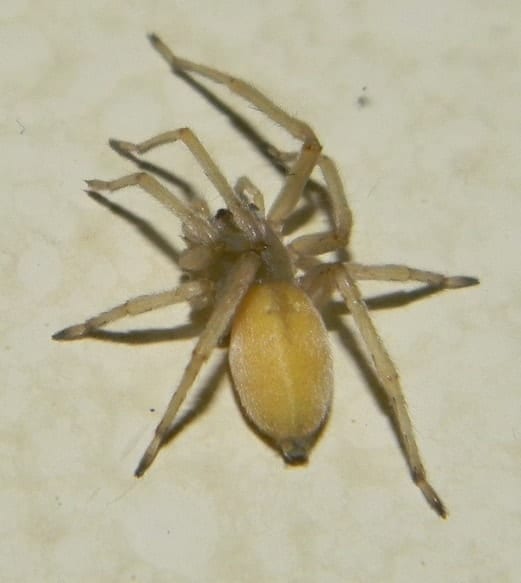
Large Spiders in Oklahoma
Now we have hopefully ruled out that you are dealing with a potentially harmful spider. Let’s next look at some common large spiders that you may find in your Oklahoma home or outside. The largest spiders in Oklahoma are wolf spiders and tarantulas. Wolf spiders can reach a leg span of over 4 in (10 cm). Tarantulas can reach an even bigger body size than wolf spiders but have shorter legs – the largest tarantula found in Oklahoma is the Texas brown tarantula (Aphonopelma hentzi), aalso called Oklahoma tarantula, that can reach a legspan of up to four inches.
Other large and brown spiders in Oklahoma are grass spiders, fishing spiders, southern house spiders, huntsman spiders and nursery web spiders.
Just click on any of the images or links to learn more about the spider.
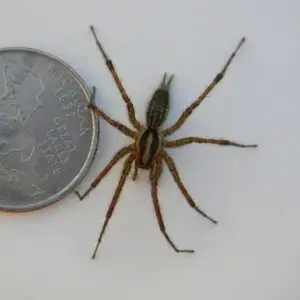
Agelenopsis – American Grass Spider
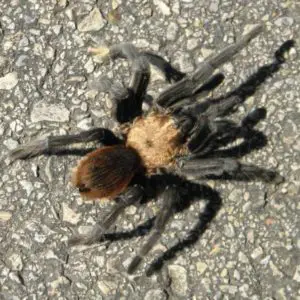
Aphonopelma Hentzi – Texas Brown Tarantula

Dolomedes – Fishing Spider
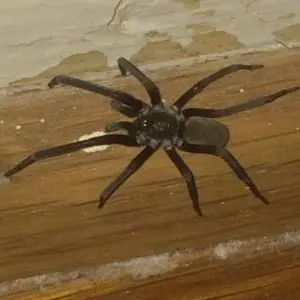
Kukulcania Hibernalis – Southern House Spider
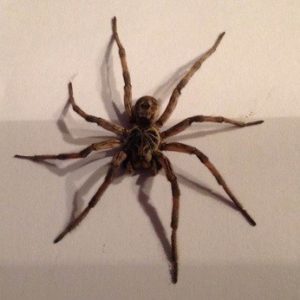
Lycosidae – Wolf Spider
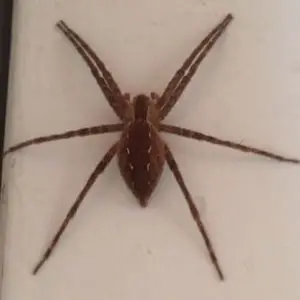
Pisaurina Mira – American Nursery Web Spider
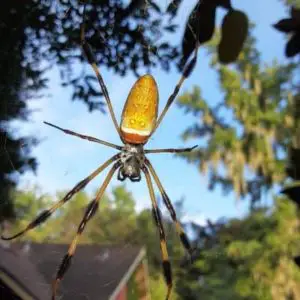
Trichonephila Clavipes – Banana Spider
Orb Weaver Spiders in Oklahoma
Orb weaver spiders come is a range of colors, shapes and sizes. They all build beautiful orb-shaped webs to catch flying insects. The garden spider Argiope aurantia is one of the most common black and yellow spiders in Oklahoma. Other common orb weavers are spotted orb weavers and spiny-backed orbweavers. Here is an overview of pictures and names of Oklahoma orb weavers:
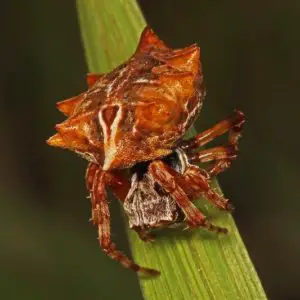
Acanthepeira Stellata – Starbellied Orb Weaver
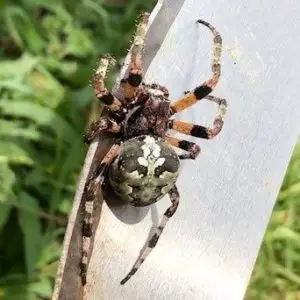
Araneus Bicentenarius – Giant Lichen Orb Weaver
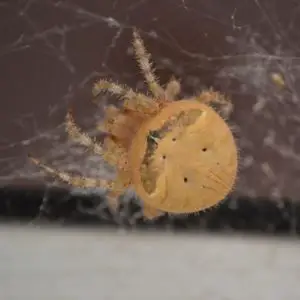
Araneus Gemmoides – Cat-Faced Spider or Jewel Spider
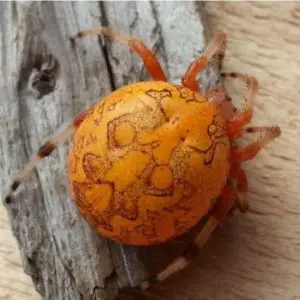
Araneus Marmoreus – Marbled Orb Weaver
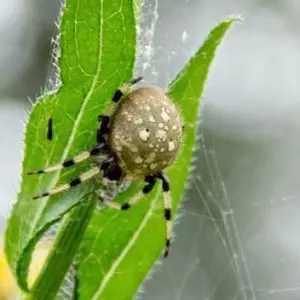
Araneus Trifolium – Shamrock Spider
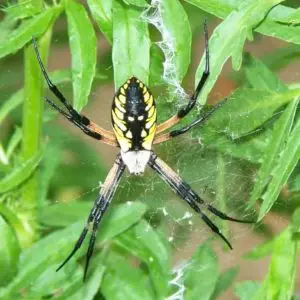
Argiope Aurantia – Black and Yellow Garden Spider
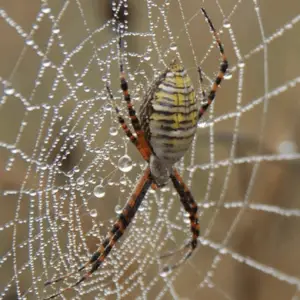
Argiope Trifasciata – Banded Garden Spider
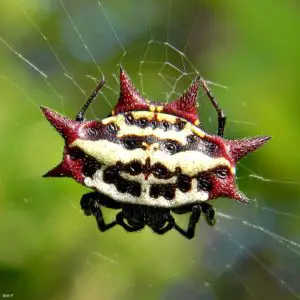
Gasteracantha Cancriformis – Spinybacked Orb Weaver
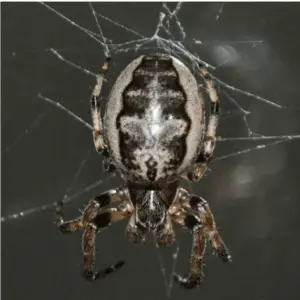
Larinioides Cornutus – Furrow Spider
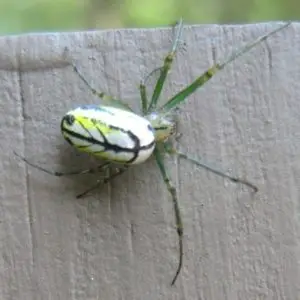
Leucauge venusta – Orchard Spider
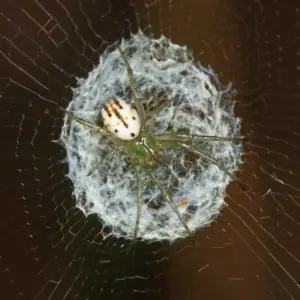
Mangora gibberosa – Lined Orbweaver
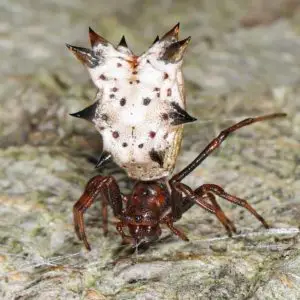
Micrathena gracilis – Spined Micrathena
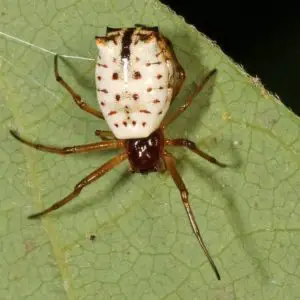
Micrathena mitrata – White Micrathena
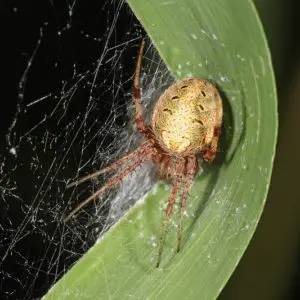
Neoscona Arabesca – Arabesque Orb Weaver
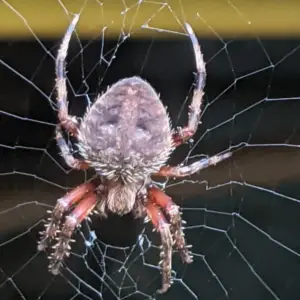
Neoscona crucifera – Spotted Orb Weaver
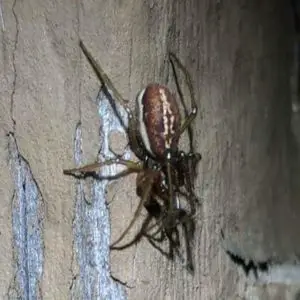
Pachygnatha

Trichonephila Clavipes – Banana Spider
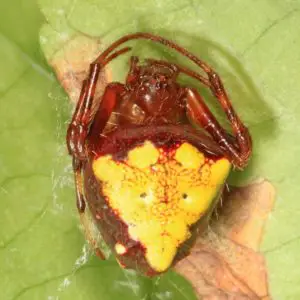
Verrucosa Arenata – Arrowhead Spider
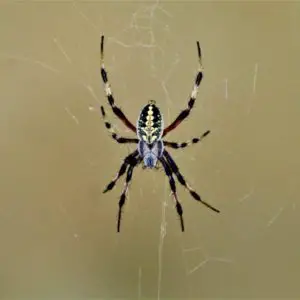
Western Spotted Orb Weaver – Neoscona Oaxacensis
Jumping Spiders in Oklahoma
Jumping spiders are small to medium-sized spiders with thick front legs and eight large eyes. They have the ability to jump up to 45 times their own body size. The most common jumping spiders in Oklahoma are:
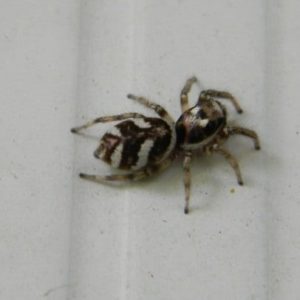
Salticus Scenicus – Zebra Spider
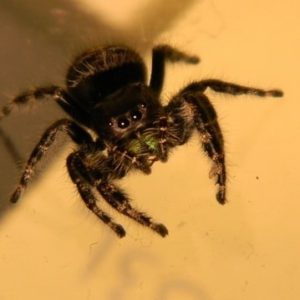
Phidippus audax – Daring Jumping Spider
Other common Oklahoma spiders
Other spiders that are often seen in Oklahoma are cobweb spiders (Steatoda sp.), crab spiders, ground spiders, common house spiders and cellar spiders. Just click on the images below to learn more about each species:
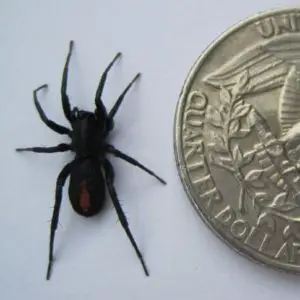
Castianeira Descripta – Red-Spotted Ant Mimic Spider
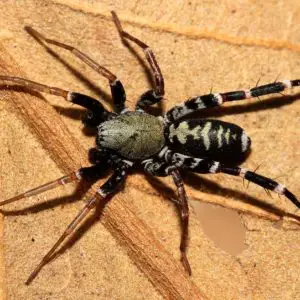
Castianeira Longipalpa – Long-Palped Ant Mimic Sac Spider
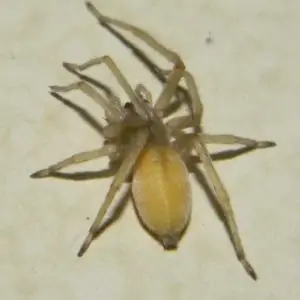
Cheiracanthium Mildei – Northern Yellow Sac Spider
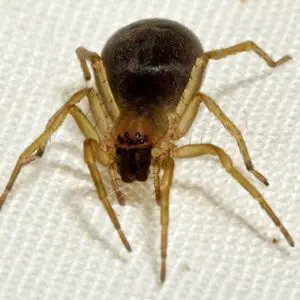
Clubiona – Leaf-Curling Sac Spider
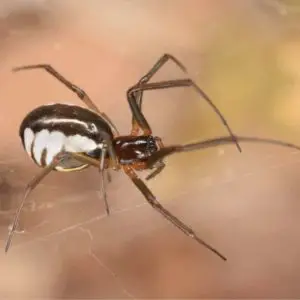
Frontinella Pyramitela – Bowl and Doily Spider
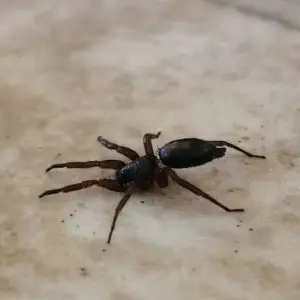
Herpyllus Ecclesiasticus – Eastern Parson Spider
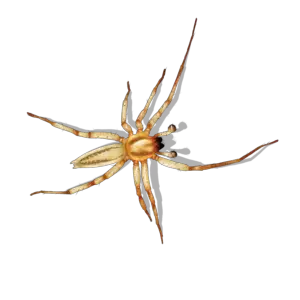
Hibana – Ghost Spider
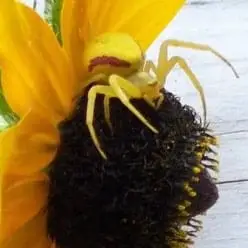
Misumena – Flower Crab Spider
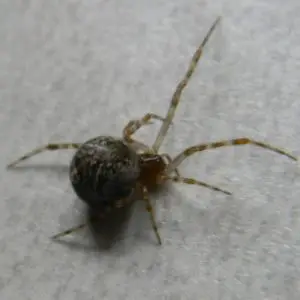
Parasteatoda tepidariorum – The Common House Spider
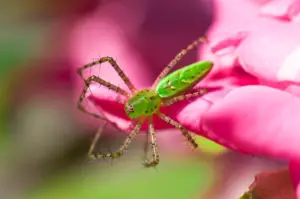
Peucetia viridans – Green Lynx Spider
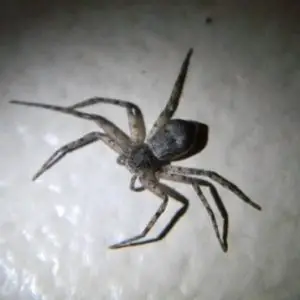
Philodromus – Running Crab Spider
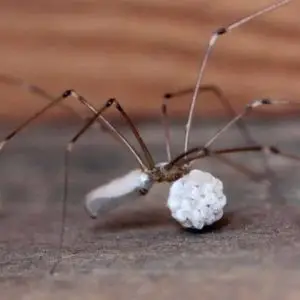
Pholcidae – Daddy Long-Legs or Cellar Spider
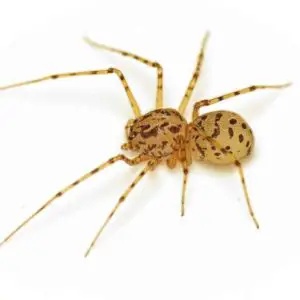
Scytodes Thoracica – Spitting Spider
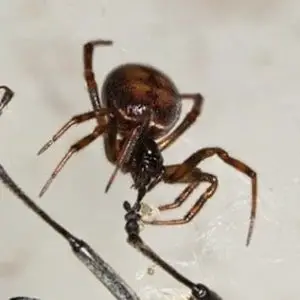
Steatoda Bipunctata – Rabbit Hutch Spider
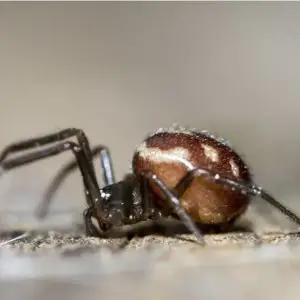
Steatoda Grossa – False Black Widow Spider
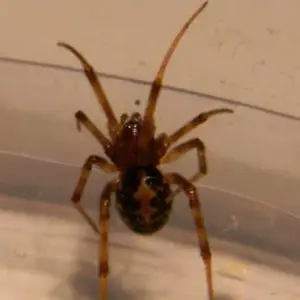
Steatoda Triangulosa – Triangulate Cobweb Spider
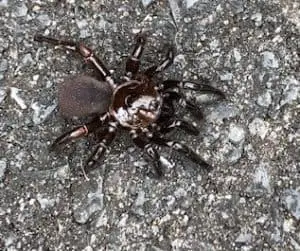
Ummidia – Trap-Door Spider
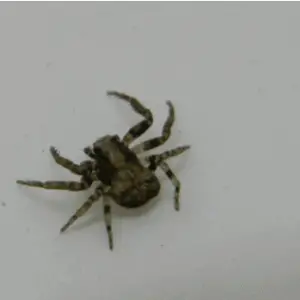
Xysticus – Ground Crab Spider
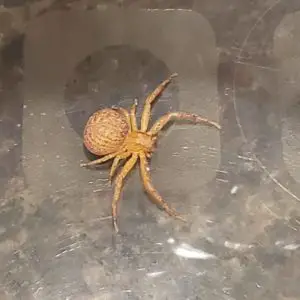
Xysticus Funestus – Deadly Ground Crab Spider
Oklahoma Spider Identification
If you have found a spider in Oklahoma that is not on our list, head to our spider identification page. We have built a handy tool that helps you identify your spider by answering a few questions. If that still doesn’t identify the spider for you, simply take a picture of your spider and upload it to the identification page. Our team will do the best to find an ID for you as quickly as possible.
